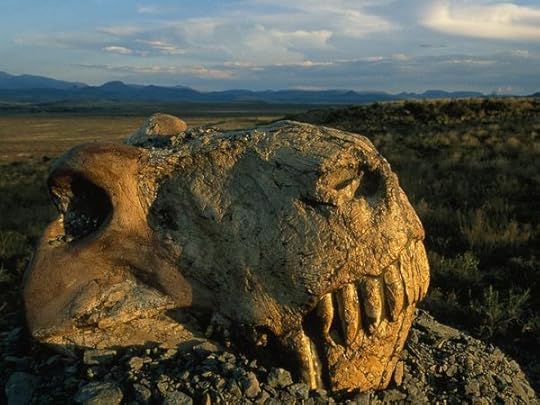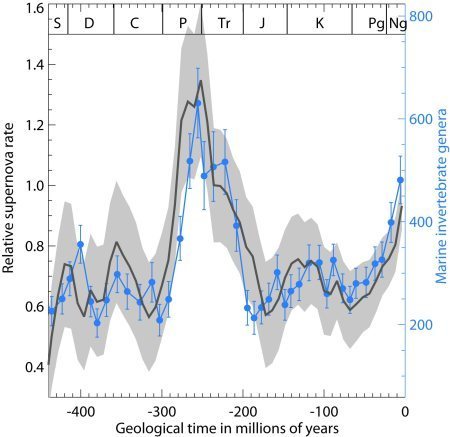Twinkle, Twinkle

It seems that the rate of supernova occurrence (black line) is pretty much a dead match for biodiversity -- the normalized marine invertebrate genera count (blue line). The gray is the error band around the biodiversity count.

When Sagan said we were made of star-stuff, he had only half the picture. Apparently, the stars really do affect life on earth. The Permian extinction falls right in:
Svensmark notes that the Late Permian saw the largest fall in the local supernova rate seen in the past 500 million years. This was when the Solar System had left the hyperactive Norma Arm of the Milky Way Galaxy behind it and entered the quiet space beyond.
Through a variety of mechanisms, too few supernovae resulted in warmer air, reduced circulation, poor nutrient mixing, ending with a shortage of oxygen in the atmosphere. Nearly all life on earth went extinct.
But once upon a time an abundance of nearby supernovae chilled the earth so badly it kicked into Snowball Earth. So, Goldilocks, human life arose in a period of "just right" insofar as supernovae are concerned.

Published on July 06, 2013 19:02
No comments have been added yet.
Michael Flynn's Blog
- Michael Flynn's profile
- 237 followers
Michael Flynn isn't a Goodreads Author
(yet),
but they
do have a blog,
so here are some recent posts imported from
their feed.



